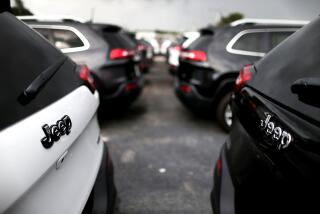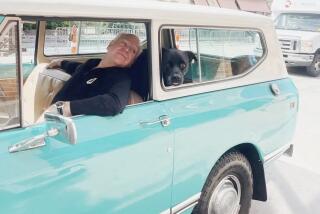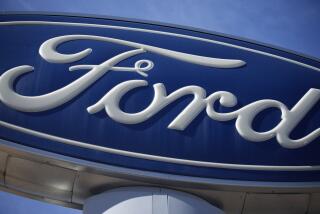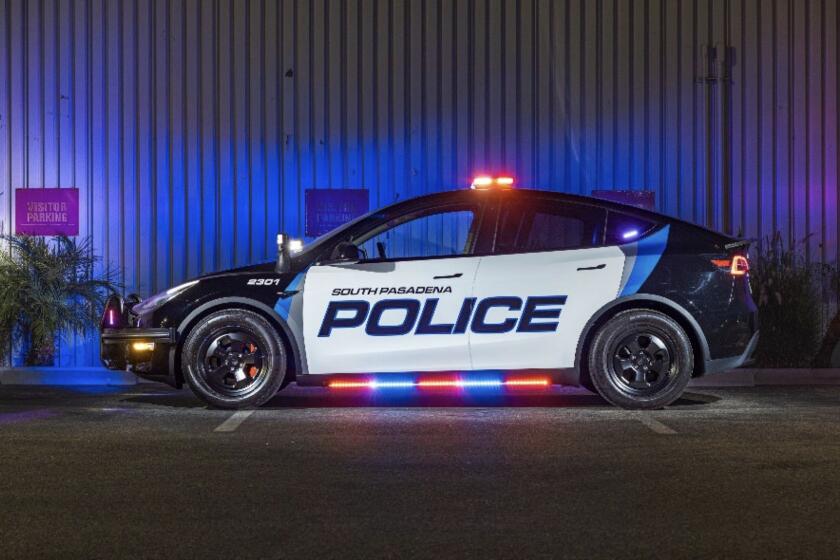Don’t call it a station wagon
The first rule of selling station wagons is don’t talk about station wagons.
That’s the marketing plan behind the stealthy return of one of the auto world’s most practical -- and most ridiculed -- designs.
For years, the mere idea of a wagon has been poison in the car world, resurrecting queasy carpool memories of ungainly giants like the Ford Country Squire and the Oldsmobile Vista Cruiser for a whole generation of drivers.
With its utility co-opted by the minivan and, later, the sport utility vehicle, the station wagon seemed destined for the junkyard.
But with fuel-devouring SUVs becoming passe in an age of $3.50 gasoline, carmakers have begun quietly embracing the familiar shape once again. Automotive sales resource Kelley Blue Book classified 37 different vehicles for sale in the U.S. as wagons last year, compared with just 17 in 1997.
General Motors Corp., Toyota Motor Corp. and even BMW have introduced models of late that look suspiciously like station wagons. And according to marketing consulting firm Strategic Vision Inc., 10.3% of vehicles sold in the U.S. last year fit into categories that, in essence, are wagon-like. Even if almost nobody uses the W-word.
“It is believed that ‘wagon’ is a death sentence for a vehicle,” said Alexander Edwards, automotive division president at Strategic Vision. “So people come up with other names for them or slight variations on the theme.”
A prime example, many say, is Toyota’s Venza, introduced this month at the North American International Auto Show in Detroit. With its ground-hugging design and raised rear roof line, Toyota calls it a “crossover sedan.” Aaron Bragman, an auto industry analyst at research firm Global Insight Inc. who was at the unveiling, had a different take on it: “Camry station wagon.”
Toyota begs to differ. “It blurs the lines between sedans and crossovers and SUVs,” said spokeswoman Denise Morrissey of the Venza, which will be built in Kentucky on the same platform as the Toyota Camry, the Avalon and the Lexus ES350. “It’s not a station wagon.”
The wagon wasn’t always reviled. Among the oldest of car designs, station wagons originally were designed to take passengers and their luggage to and from the train station, hence the name. By the 1930s, station wagons began receiving more upscale touches, including the famous wood-bodied design, or “woodie,” which lasted until the early 1950s.
The real heyday for station wagons began with the steel-bodied designs that sprang up in the late 1940s, developing over time into the miles-long, acres-wide designs of the 1960s and ‘70s known for their faux-wood paneling. But for lovers of station wagons, 1984 was a very dark year.
That was when Chrysler introduced the minivan, and the slow decline of the wagon commenced. Honda and Toyota killed their mid-size wagons in the mid-1990s, around the same time GM halted production of the Buick Roadmaster and Chevy Caprice full-size wagons.
“It’s too bad such a stigma developed about wagons,” said Bob Boniface, director of advanced design at GM. “Designers love them. They’ve got great properties, a low center of gravity and excellent aerodynamics.”
Now, vehicles that look and feel an awful lot like station wagons are back. They’re built on car chassis, they have hatchback rear doors and lots of cargo space, and they sport the driving characteristics, interior design and fuel-efficiency of a sedan. In many cases, they’re described as “crossovers,” the industry’s moniker du jour, describing something that is not an SUV and isn’t a car.
Of course, there’s a huge range of vehicles in this category, from the battleship-like Buick Enclave (weighing in at 4,800 pounds and with a length of 16 feet, 8 inches) to the relatively petite Subaru Forester (which measures 14 feet, 5 inches and 3,200 pounds).
Also looking wagonesque are vehicles like the Cadillac SRX, built on the same chassis as the Cadillac CTS sedan; the Mini Clubman, an extended, four-door version of the popular Mini hatchback; and the newly revealed BMW X6, with its sharply raked rear hatchback. Like the Venza and guys with mullet hairdos, all have been accused of putting the business in the front and the party in the back.
“It’s all a matter of fine distinctions,” said Eric Noble, president of consulting firm Car Lab. “But perception is reality, and the key buyers in the market do not perceive these vehicles to be wagons.”
Of course, not all carmakers, nor all drivers, shun the wagon. In Europe, where the design is -- depending on the region -- known as an “estate,” “break” or “touring,” sales are consistently strong.
And for a few brands in the U.S. (think Volvo), the wagon has always been a staple.
Volkswagen is reintroducing its Jetta wagon, calling it the SportWagen, this fall, adding it to the Passat wagon already in the VW lineup. “We have no problem with that word here,” said spokesman Steve Keyes, adding that there’s a “built-in audience” for the wagons.
But for most carmakers, it’s still a dangerous and exceedingly thin line to tread: “If a vehicle becomes too wagon-like, it’ll absolutely be bolted to the showroom floor,” Noble said.
One popular sleight of hand is to raise the chassis and put the car on big, aggressive wheels, giving it a vaguely truck-like look. It’s a metamorphosis evident when contrasting the Volvo V70 wagon with the Volvo XC70 crossover. The primary difference: bigger wheels and four-wheel drive, resulting in a car that brings to mind nothing so much as the AMC Eagle station wagon of yore.
Edwards of Strategic Vision said automakers may not have to play semantic games much longer. Increasingly, there’s evidence that younger car buyers don’t have the same stigmas about wagons as their parents, as evidenced by their recent embrace of hatchbacks such as the Mazda3, the Nissan Versa and the Honda Fit.
“The negative connotations are slowly receding,” he said.
For the time being, however, consumers will have to be contented to know that a wagon, by any other name, still will have that sweet new car smell.






